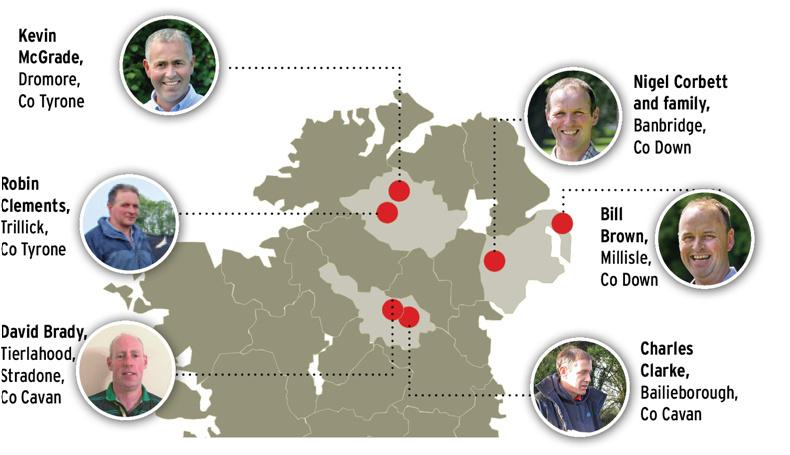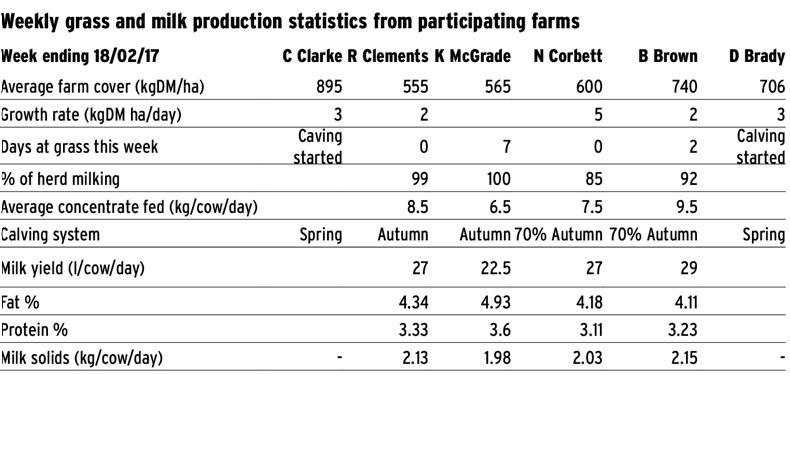Analysing Herd health
This week we start a herd health series that investigates the total cost of managing herd health on the Dairylink project farms.
We will aim to establish what the different areas (preventative/treatments) within individual herd health issues are costing farms.
To get a full picture we also want to consider the numbers of cows leaving farms due to culling and herd mortality.
Spring calving Charles Clarke from Bailieborough, Co Cavan, has a total herd health cost of €10,700, which equates to 1.87c/l or €95 per cow. This cost includes all medicine and veterinary intervention on the farm (see figure 1). Charles milked 110 cows and had 73 weanling animals and 47 in-calf animals on farm in 2016. This means herd health cost per livestock unit was €65/LU in 2016.
Analysis within the Dairylink farmers highlights significant variation in herd health costs across farms.
To get a more rounded view we have also analysed mortality or culling rates in an attempt to simplify and explain the full herd health cost on each of the project farms (see figure 2).
Charles vaccinates for BVD, scour and leptospirosis. In total this represents 25% of the total herd health cost for this farm. Worm and fluke treatment also equates to 25% of the herd health bill, this includes wormer and fluke treatments for beef stock on the farm.
Charles has outlying land, so beef animals are kept for grazing on land where cutting is not possible.
For 2016 Charles used Eprizero on milking cows during the summer and Endofluke and Bimectin wormer on all stock at housing time.
A mineral bolus was used on the herd in 2016 with vital minerals and trace elements. The cost of the bolus was €6/head, with all cows and heifers receiving the bolus. Hoof care only includes copper sulphate used in the footbath. All hoof paring is carried out by Charles, and no cost is placed on this other than materials used.
In 2016 Charles had 21 cows leave the farm, 20 cull cows and one dead cow in the spring of 2016 which equates to 18.5%.
Charles Clarke Bailieborough, Co Cavan
Calving started on the 10 February with 30 cows calved in the first 10 days. Calving has been going well, with no cows needing assistance so far. Cows are in the cubicle house and just put on straw for calving or maybe the day before calving.
This requires a continuous monitoring of cows in the cubicle shed, but with limited space for cows on straw, I need to get cows calved and move them back in to the cubicle shed shortly after calving. Colstrum is stomach tubed into calves within two hours of calving, they are tagged and moved to the rearing house. So far I have approximately 50% heifer calves and I’m pleased with calf health. Our first calves are Jersey-cross and are showing good vigour.
Urea was spread last week at a rate of 25 units per acre. I have good grass covers on the grazing block and I am not able to get any slurry onto this. Average cover is 895kgDM/ha, with the highest cover paddock at 1,500kgDM/ha. Slurry has been spread on the outlying blocks.
Grazing is progressing well, but demand is still low. Cows are out after morning milking and back in at 2pm. I split paddocks and this helps get cows in and out of paddocks without causing significant damage.
Despite the small amount of rain, paddocks are wet – wetter than last year on this farm, I think. I have started cows on low-cover paddocks and despite low numbers grazing, cows have grazed well with low residual cover.
Milking has started again on the farm and I still have no new milking parlour. I really need to improve the milking facilities on the farm to reduce the time spent in the parlour.
We have plans for a new parlour or extension of the existing parlour, but they are all still on hold.








 This is a subscriber-only article
This is a subscriber-only article














SHARING OPTIONS: